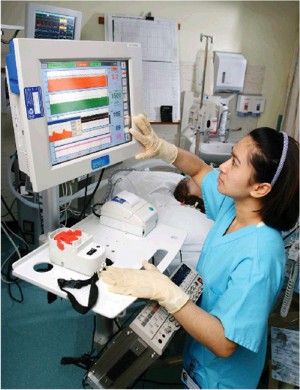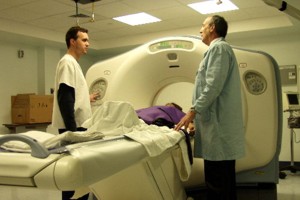| Medical Equipment | |||
| Sensors may be used to monitor
a patient's health in a hospital.
A sensor measures a quantity such as heart rate, breathing rate, blood oxygen, and temperature. The sensors are connected to a computer and their readings are used as input. The data is analysed and displayed on a monitor or used to initialise alarm systems. Some sensors are analogue (Eg temperature) where the readings may be any value in a continuous range... ...and some are digital (pulse rate) with a possible set of distinct values.
|
|
||
A hospital may also use computer controlled scanning
devices such as ...
These scanners are used to detect abnormalities such as tumors in patient's organs or blockages in flowing systems. There is generally no need for a patient to stay in hospital, although they may be given a sedative before the scan.
|
|||
|
|
|||
These scanning devices are...
|
...but they are...
|
||
| Research is being done to get faster scans
with clearer resulting pictures.
|
|||
|
It is important that patient care is not interrupted or becomes
impossible due to computer crashes, so hospitals will generally have a
number of computers available so that if one breaks down there is always
another to carry on.
Emergency generators may be used or a UPS (Uninterruptible Power Supply) - special power source that takes over if there is a power cut. |
|||



